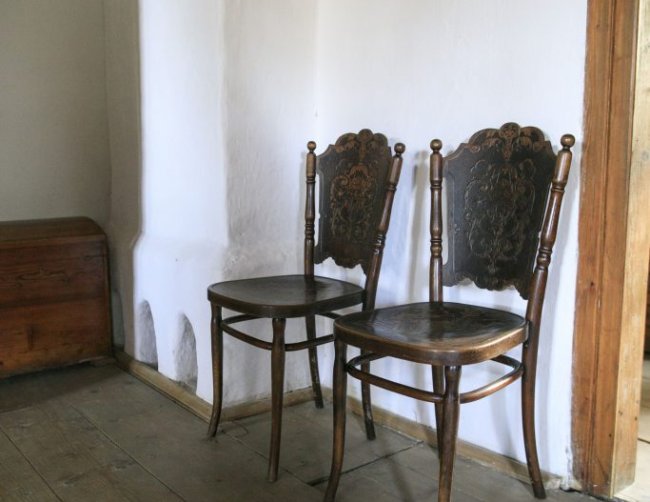Object
Viennese chair
Information
Inventory no
MNS KW 16775, EI/4241
Department
Ethnography department
Material
wood
Copyright classification
https://pl.wikipedia.org/wiki/Domena_publiczna
Description
Among the furniture in the apartment of MP Myjak from Zagorzyn, a wooden chair from the Viennese company Jacob & Josef Kohn deserves attention. The seat and backrest of the furniture are decorated with an embossed grotesque ornament, consisting of a centrally placed satyr's face and plant tendrils entwining it. The chair has turned, round legs and two decorative balusters serving as the sides of the backrest. There is a paper tag glued to the bottom of the furniture with the marking "Jacob&JosefKohn", which was used from the 1860s to 19
The history of the company dates back to 1849, when Jacob Kohn and his son Josef founded a bentwood furniture factory in Vienna. The company quickly became the main competitor of the German company Thonet and one of the leading furniture manufacturers in Austria-Hungary. When designing furniture, the Kohn company cooperated with the famous Crafts Cooperative called the Vienna Workshops, founded in 1903 by Josef Hoffman and Koloman Moser in Vienna, inspired by Art Nouveau and the British Arts & Crafts trend. The result of cooperation with designer Josef Hoffman is, among others: the famous Sitzmachine - a chair with adjustable backrest from around 1905, which the Kohn company sold until 1916 in many versions, including: with and without pillows. This model is currently in the most famous museums around the world. The cooperation between Jacob&Josef Kohn and Hoffman is one of the first examples of successful cooperation between a designer and a craftsman, perfectly fitting the assumptions of the Vienna Workshops.
In 1914, the company merged with its sister company Mundus AG, resulting in the new brand Mundus-Kohn, headquartered in Vienna until 1919, and in later years in Cieszyn. The company's plants located in the Czech Republic, Austria and Poland were engaged in mass production of chairs, tables, hangers and beds. The company was constantly expanding its product range, offering complete equipment for cafes, hotels and private individuals. In later years, it focused on the production of more luxurious living room furniture. Another significant change in the company's structure occurred in 1924, when it was taken over by the largest manufacturer of bent furniture, Thonet. This state of affairs lasted until the beginning of World War II, when control over production passed into the hands of the occupier. After the war, Thonet became a Czechoslovak national enterprise and received a new name Ton (Továrna Ohýbaného Nábytku – Bent Furniture Factory).
Justyna Stasiek-Harabin
Important literature:
Pierre Kjellberg, "History of European Furniture", Warsaw 2014
Steven Parissien, "The History of Interiors. House since 1700”, Warsaw 2007


